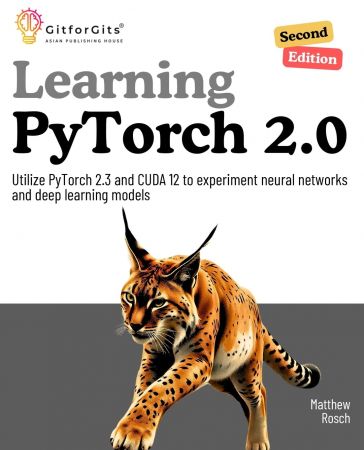Learning PyTorch 2.0, Second Edition: Utilize PyTorch 2.3 and CUDA 12 to experiment neural networks and deep learning models


Learning PyTorch 2.0, Second Edition: Utilize PyTorch 2.3 and CUDA 12 to experiment neural networks and deep learning models
English | 2024 | 8119177916 | 191 pages| Epub PDF (both convert) | 1 MB
“Learning PyTorch 2.0, Second Edition” is a fast-learning, hands-on book that emphasizes practical PyTorch scripting and efficient model development using PyTorch 2.3 and CUDA 12. This edition is centered on practical applications and presents a concise methodology for attaining proficiency in the most recent features of PyTorch. The book presents a practical program based on the fish dataset which provides step-by-step guidance through the processes of building, training and deploying neural networks, with each example prepared for immediate implementation. Given your familiarity with machine learning and neural networks, this book offers concise explanations of foundational topics, allowing you to proceed directly to the practical, advanced aspects of PyTorch programming.
The key learnings include the design of various types of neural networks, the use of torch.compile() for performance optimization, the deployment of models using TorchServe, and the implementation of quantization for efficient inference. Furthermore, you will also learn to migrate TensorFlow models to PyTorch using the ONNX format. The book employs essential libraries, including torchvision, torchserve, tf2onnx, onnxruntime, and requests, to facilitate seamless integration of PyTorch with production environments.
Key Learnings
Master tensor manipulations and advanced operations using PyTorch’s efficient tensor libraries.
Build feedforward, convolutional, and recurrent neural networks from scratch.
Implement transformer models for modern natural language processing tasks.
Use CUDA 12 and mixed precision training (AMP) to accelerate model training and inference.
Deploy PyTorch models in production using TorchServe, including multi-model serving and versioning.
Migrate TensorFlow models to PyTorch using ONNX format for seamless cross-framework compatibility.
Optimize neural network architectures using torch.compile() for improved speed and efficiency.
Utilize PyTorch’s Quantization API to reduce model size and speed up inference.





